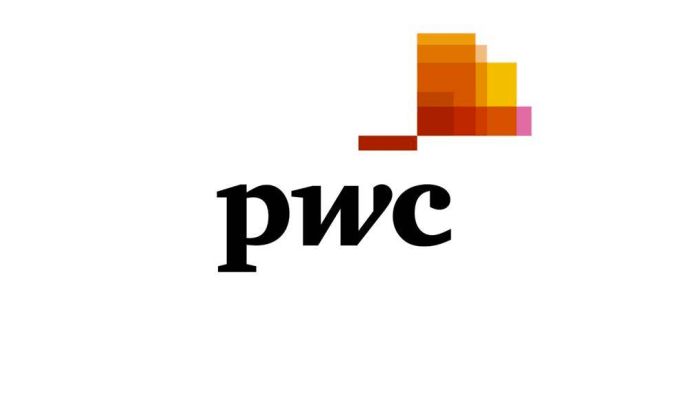Ever since the introduction of the EU Benchmark Regulation (BMR) in 2018, the market has been grappling with how to comply with its various and far-reaching requirements – from the in vogue LIBOR transition and improving contractual robustness, to the topical third country access regimes for benchmark administrators to provide benchmarks in the EU. Thanks to Brexit, we now also have a parallel regime just for the UK. These are largely carbon copies of one another, duplicating regulatory exposure for many firms – at least in the short term.
Despite these regulatory developments, the market for index-linked products has strengthened to create not just a regulatory focus on benchmarks, but also a commercial focus on them too. This means that regardless of what happens in the regulatory sphere, index providers should prepare themselves to be held to a higher standard by users.
Booming index industry
The rise in asset managers offering financial products (both passive index trackers and ETFs) tracking indices that they have created, has been driven by the investing themes and alternative investable assets that have come on to the scene since the Global Financial Crisis.
It is no secret that index trackers have, on the whole, outperformed their actively managed cousins since 2009. This has led to both an increase in the aggregate demand for index-linked products as well as an increase in the types of funds investors are wanting to gain exposure to – i.e. a whole new world of assets. There are some great examples in innovative areas including exposure to emerging technologies such as smart cities, battery value chains, and virtual working environments. Alongside these niche examples of ETFs, there has also been a well-documented push by investors towards wanting exposure to crypto-assets and ESG-compliant products.
The result of these investment trends is that by January 2020, the value of assets managed by global index funds had smashed through the $10 trillion mark. Demand for such products is a trend that is expected to remain with us for the foreseeable future, particularly given the rampant retail investing that has occurred since the start of the COVID-19 pandemic (and that continues to buoy markets). It is no wonder then, that regulators worldwide have taken more of an interest in the manufacturing of these financial products, and none more so than in the EU.
To meet the growing demand for indices there has been a boom in not just the number of indices issued by index providers, but also a host of new, technology-enabled and innovative entrants to the market offering a new client experience and challenging many of the established providers’ power base. New index providers tend to make up for what they lack in scale with competitive pricing and tailored solutions.
For many of the same reasons, the ETF market has grown hand-in-hand with the self-indexing phenomenon – that is to say, where both index and ETF are issued by the same organisation. Within this construct, there is an inherent risk of a conflict of interest – a contradiction that while generally manageable, still excites scepticism in certain spheres by regulators and observers alike.
Amendments to the BMR
The BMR (whether the EU flavour or the UK) remains the most extensive benchmarks regulation in the world. It is far-impacting and costly to comply with, and remains firmly in the public eye both within the EU and out of it due to its potential impact on third-country administrators providing indices to EU and UK-based users.
Furthermore, the BMR has come under scrutiny from industry for the way that it addresses the issues that have blighted benchmark production since the LIBOR-rigging scandal came to the fore. Consequently, at present, the EU is deep in legislative procedure to amend the BMR in various ways to deal with some of the issues that have risen since its inception in 2018, including:
Tough legacy contracts
: Empowering the EU Commission to mandate the use of a statutory replacement rate in contracts if a major benchmark used in the EU, such as LIBOR, is discontinued or becomes unrepresentative of its underlying market - this is the EU’s proposal relating to ‘tough legacy contracts’ and may overlap and potentially conflict with the related approaches taken by the FCA in the UK and ARRC in the US.
Exemption of designated FX rates
: Inserting a new exemption into the BMR covering designated non-EU FX benchmarks, such that EU supervised entities can continue to reference non-EU FX benchmarks in certain contracts after 31 December 2021, regardless of whether the rates have been authorised as third country benchmarks.
In addition to these proposed amendments, ISDA has been at the forefront of advocacy to extend the transition period for third-country benchmarks used in the EU until the end of 2025 (i.e. beyond the currently applicable deadline of 31 December 2021). This extension has been reflected in a HM Treasury policy statement regarding the UK’s post-Brexit version of the BMR, which has been taken up in the Financial Services Bill of 21 October. Without the extension, administrators of third-country benchmarks used by supervised entities in the EU would need to determine in short-order the most appropriate of the sub-optimal routes laid out in the BMR (equivalence, recognition and endorsement) to providing their indices in the EU (and the UK).
PwC: Third country benchmark administrators slow to prepare for BMR
ISDA’s proposal has gained traction in the EU legislature, with the European Council agreeing with ISDA’s transitional period extension recommendations, which it will now use as a basis for the trilogue negotiations with the European Parliament from mid-November. If this proposal is legislated on, third-country benchmark providers will be able to delay decision-making on the contentious current third-country access routes for a little longer. While that might provide some temporary respite from a regulatory perspective, unfortunately, that is not the end of the story and index users have other ideas.
Index providers under the microscope
Several recent high-profile index errors, decisions and announcements have elevated the index industry and infrastructure into the public consciousness at a level never previously seen. As a result, demand for index transparency, stability and accountability has never been higher. Index users themselves are now starting to bring pressure on those funds and index providers (whether the fund itself or a standalone index provider) due to composition or calculation errors in certain indices in addition to levying questions around integrity and accountability – key themes that the BMR itself, and the IOSCO Principles for Financial Benchmarks before that, had intended to resolve. These have been particularly prevalent in relation to the largest and most well-known and established index providers.
Errors and scandals are quick to draw the eye, whether it be an asset manager erroneously including certain stocks, such as a gun manufacturer in an ESG fund, due to an indexing error; or an index employee front-running, for personal gain, an index composition change they were privy to. In the first example, the asset manager itself was forced into issuing an apology to its investors; and the second example has led to criminal proceedings for the individual and renewed focus on the index provider’s use of discretion or “expert judgement” in an index methodology.
As well as erroneous index compositions, providers offering index-linked products have also come under scrutiny from investors for not being accountable or for pursuing wrong motivations. For example, where emerging market indices are judged to be inappropriately weighted towards certain markets in the index. What each of these examples demonstrates is an industry-wide focus on indices that goes hand-in-hand with the principles addressed by the BMR.
What happens when the regulators do not address these concerns? We are starting to see the result – the index consumers themselves begin leaning on their providers to be more transparent in how they administer their indices and prove they can be trusted to avoid errors and follow transparent methodologies. The consequent demand for independent audits of index providers has never been greater. Ironically, audit firms themselves are not without their own challenges, with increasing scrutiny and demands in relation to the depth and quality of the audits being undertaken.
The IOSCO Principles for Financial Benchmarks remain a staple component and the core set of criteria for an independent audit of an index provider. Increasingly, however, we are seeing consumers demanding more - obtaining an independently audited report of compliance is just step one. Index providers are coming under pressure to demonstrate effective control environments (think Sarbanes Oxley) across the full suite of their index services. An index provider who can demonstrate compliance with the IOSCO Principles (and BMR, where necessary) as well as effective control environments encompassing activities not covered by IOSCO (ESG and rebalancing processes to give two notable examples) will be going a long way to restoring trust in the sector, and establishing themselves as best in class.
Conclusion
The irony of the proposed extension to the third-country access regime under the BMR is that while it provides some respite for non-EU providers until 2025, it does contradict the prevailing winds of cynicism and scrutiny over the benchmarks and indices sector.
The coming months and years are likely to see index providers being held to a higher standard regardless and a level of accountability not seen before by the end investors and intermediary index users who demand transparency and stability.



